In the serene world of bonsai, each tiny tree tells a story of patience, artistry, and care. For both the novice gardener and the seasoned horticulturist, cultivating a bonsai offers a unique opportunity to connect with nature on an intimate scale, transforming the practice of gardening into a meditative art form. These miniature trees, with their intricate branches and delicate leaves, are not just plants; they are living landscapes, capable of evoking the grandeur of towering forests within the confines of a small pot.
Whether you’re just beginning your journey into bonsai or you’ve lovingly tended to them for years, understanding their care is crucial to their health and beauty. This article will guide you through the essentials of bonsai care, from selecting the right species for your environment to mastering the art of pruning and shaping. You’ll discover the delicate balance of watering, the importance of proper lighting, and the secrets to keeping your bonsai thriving through the seasons.
As we delve into the world of bonsai, you’ll gain the confidence to nurture these remarkable trees, ensuring they bring you joy and tranquility for years to come. With practical tips and expert insights, you’ll learn to appreciate the subtleties that make bonsai care both challenging and rewarding. Embrace the calm and creativity that come with tending to your bonsai, and watch as your efforts bloom into a testament of nature’s resilience and your own dedication.
Select the Ideal Bonsai Species
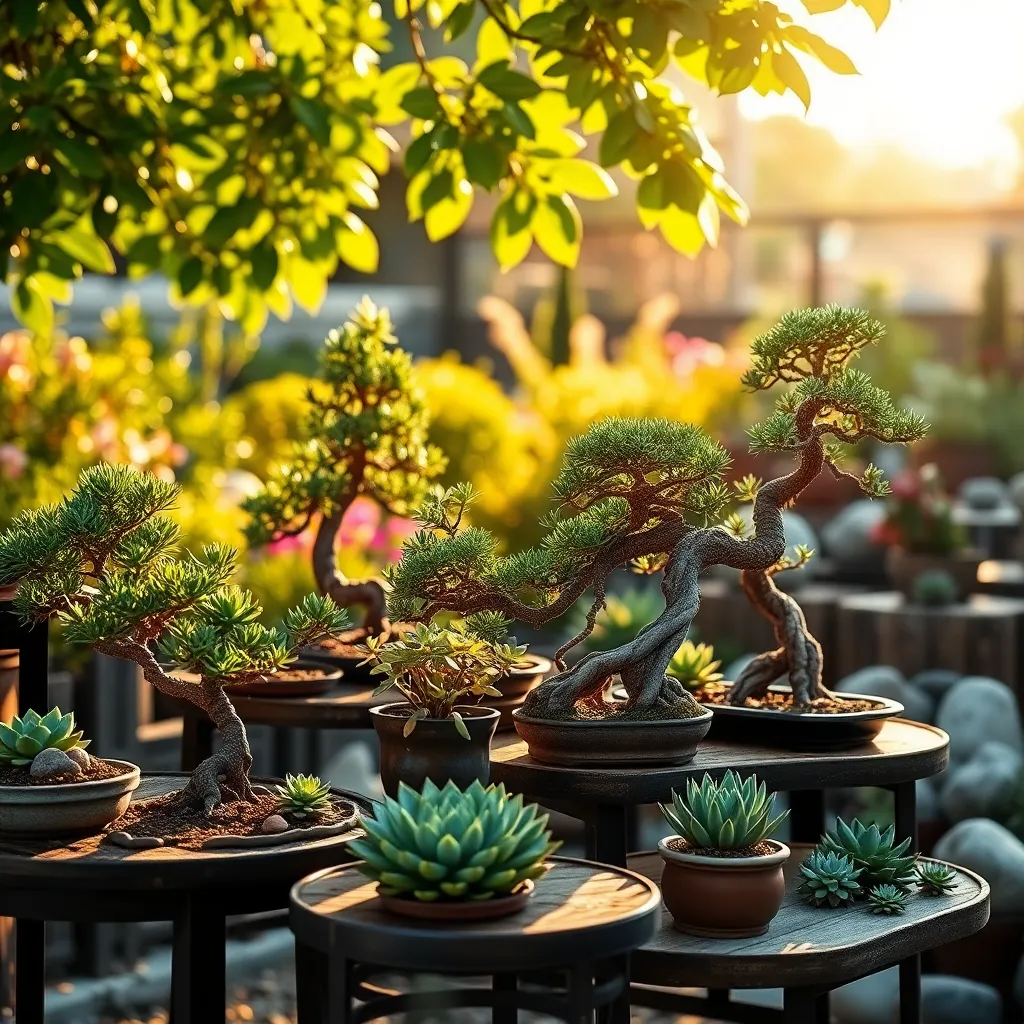
Choosing the right bonsai species is crucial to your success in bonsai cultivation. Beginners should consider species like Ficus, Jade, or Juniper, which are hardy and forgiving of minor mistakes.
Ficus bonsai trees are popular due to their adaptability and resilience. They thrive in a wide range of lighting conditions and require well-draining soil to prevent root rot.
For those with a bit more experience, you might try Japanese Maple or Pine bonsai. These species require more specific care, such as precise watering schedules and seasonal pruning to maintain their shape.
When selecting a bonsai species, consider your local climate and the environment where you plan to keep your bonsai. Indoor bonsai benefit from species that can tolerate lower light levels, while outdoor bonsai need to withstand your region’s temperature fluctuations.
Regardless of the species, ensure your bonsai is in the right pot with adequate drainage. Regular watering is crucial, but it’s important to avoid waterlogging; let the topsoil dry slightly between waterings.
Position in Optimal Light Conditions
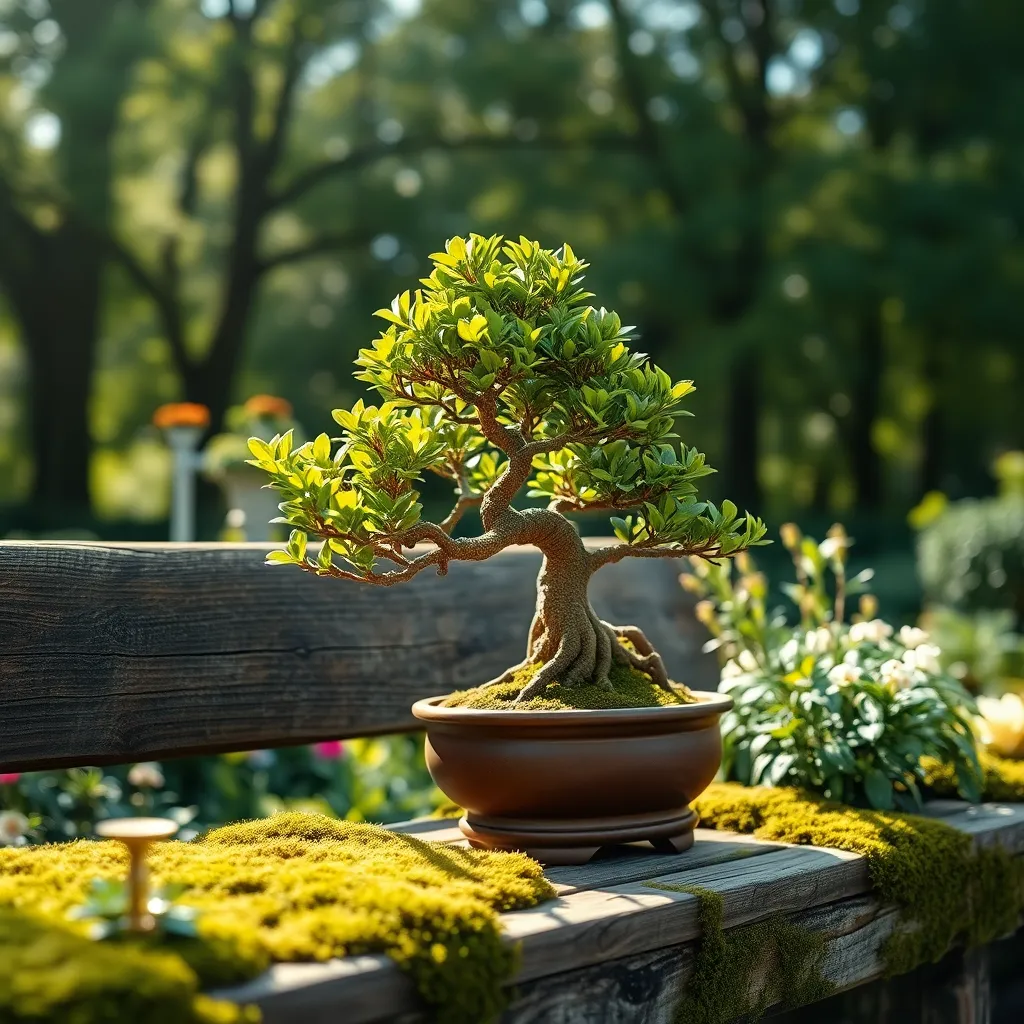
Finding the right light conditions is crucial for the health of your bonsai tree. Most bonsai species thrive in bright, indirect sunlight, making a south-facing window an ideal location for indoor trees.
For outdoor bonsai, ensuring they receive morning sun and afternoon shade can prevent leaf burn. However, species like junipers and pines prefer full sunlight throughout the day, benefiting from at least six hours of direct sun.
Monitoring light levels is essential, as too much or too little can stress your bonsai. If you notice elongated growth or pale leaves, consider increasing light exposure by moving your tree to a sunnier spot.
Conversely, if leaves are scorching or becoming brittle, reduce light intensity by introducing a sheer curtain or relocating it to an area with dappled sunlight. Remember, the key to bonsai success is adapting its environment to mimic its natural habitat as closely as possible.
Water Consistently with Care
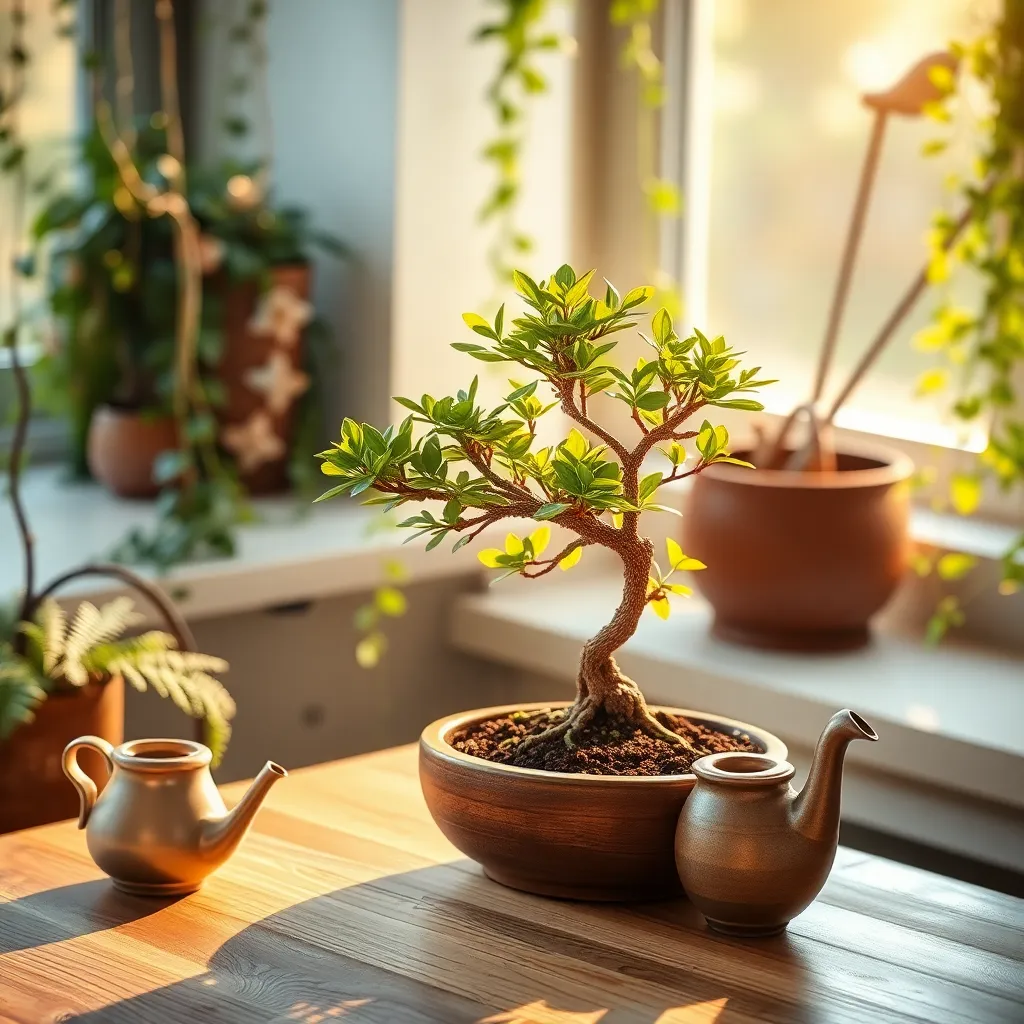
Proper watering is crucial for the health of your bonsai tree, ensuring it thrives in its miniature form. Consistency is key; your bonsai should neither dry out completely nor be overwatered. To achieve this balance, check the soil moisture regularly by inserting your finger about an inch into the substrate. If the top inch feels dry, it’s time to water your bonsai thoroughly, allowing water to drain freely from the bottom of the pot.
Using the right soil mix can greatly aid in maintaining proper moisture levels. A well-draining bonsai soil mix typically contains a blend of akadama, pumice, and lava rock, which helps prevent waterlogging while still retaining necessary moisture. For beginners, pre-mixed bonsai soil available at garden centers can be a convenient option. More advanced gardeners might experiment with their own soil blends to suit specific tree species and environmental conditions.
Watering frequency will vary depending on several factors, including the tree species, pot size, and climate. A general rule of thumb is to water your bonsai when the soil appears slightly dry, which may mean daily watering during hot summer months and less frequently in cooler seasons. It’s important to water early in the day to ensure the foliage dries quickly, minimizing the risk of fungal diseases. For those with busy schedules, an automatic drip irrigation system can provide consistent moisture without daily manual intervention.
Consider the specific needs of your bonsai species, as some trees, such as junipers, prefer slightly drier conditions, while others, like maples, require more moisture. Adjust your watering schedule accordingly and pay close attention to how your tree responds to changes in watering patterns. To further enhance your bonsai care skills, keep a journal to track watering times and observations, helping you refine your technique over time. With attentive care and consistent watering, your bonsai tree will flourish, becoming a beautiful testament to your gardening dedication.
Prune and Shape Regularly
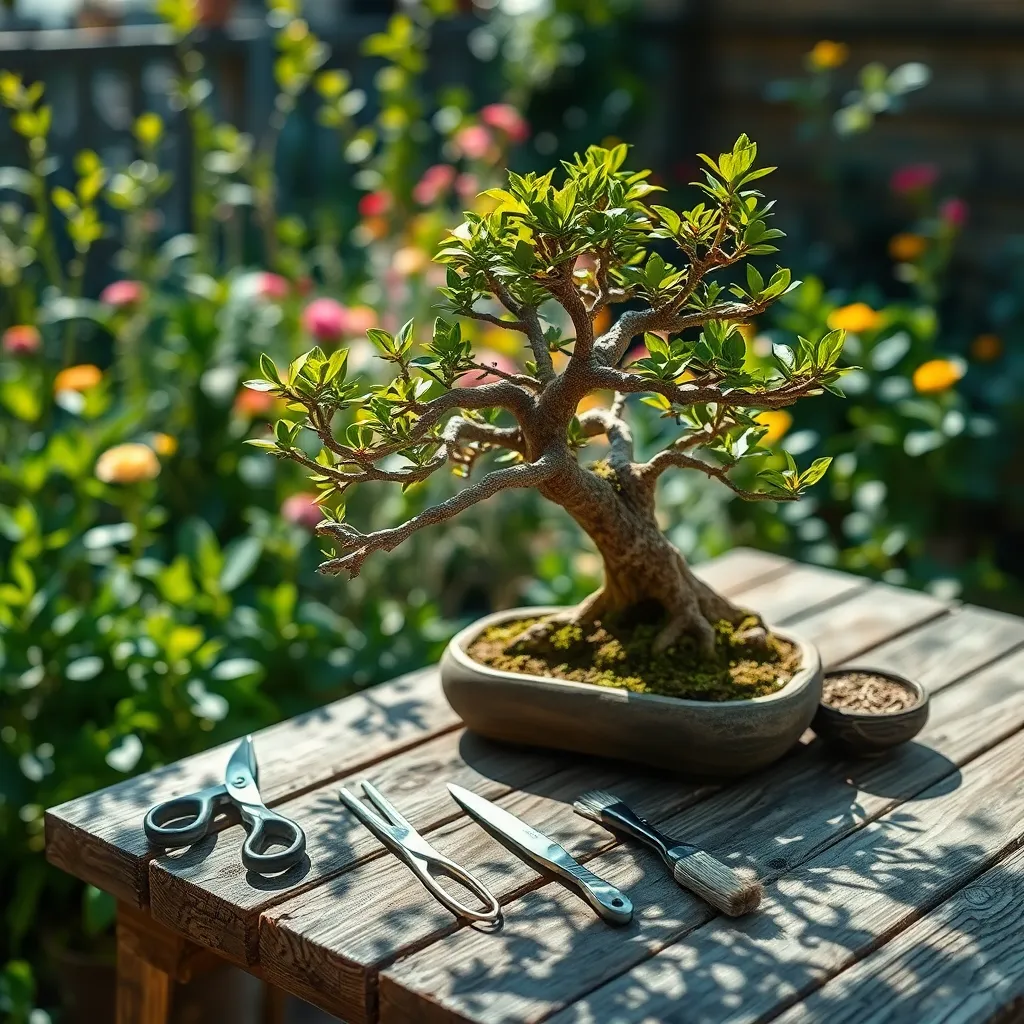
Pruning is an essential practice for maintaining the health and aesthetics of your bonsai tree. Regular pruning helps control growth, ensuring your bonsai remains within the desired shape and size. Start by removing any dead or diseased branches, as these can hinder the tree’s overall health and affect its appearance. Use sharp, clean tools to make precise cuts, reducing the risk of infection.
For beginners, focus on trimming back new shoots to maintain the shape of your bonsai. Keep an eye out for any branches that grow too long or disrupt the overall design. Advanced gardeners can experiment with techniques like leaf pruning, which involves removing leaves to encourage smaller foliage and more delicate branches. This technique can enhance the miniature effect and add to the tree’s aesthetic appeal.
Consider the specific species of your bonsai when planning your pruning schedule. Some trees, like junipers, prefer pruning in early spring, while others, such as maples, may benefit from summer trimming. Research the seasonal needs of your bonsai’s species to optimize pruning times. Additionally, shaping with wire can be used to guide the growth of branches. Ensure you check the wire regularly to prevent it from cutting into the bark as the tree grows.
Maintaining the bonsai’s shape involves more than just cutting back branches. Thinning out dense foliage allows light and air to penetrate the inner sections of the tree, promoting even growth. For those ready to delve deeper, refining techniques like jin and shari can add character to your bonsai. These advanced techniques mimic the natural aging process by stripping bark and creating areas of exposed wood. Always approach these methods with care to avoid stressing the tree.
Repot to Refresh Soil Periodically
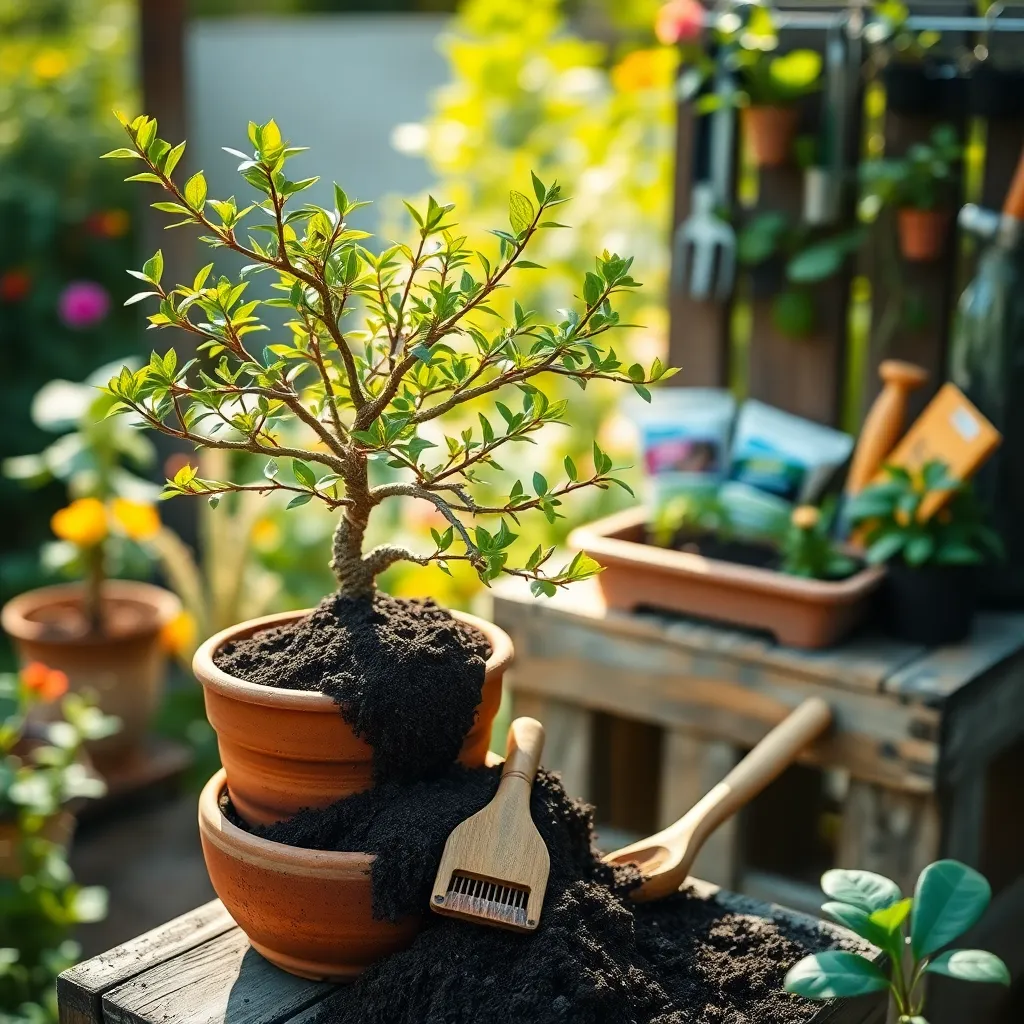
Just as pruning maintains the shape of your bonsai, repotting refreshes the soil and ensures healthy growth. For most bonsai trees, repotting every two years is ideal, but fast-growing species may require annual attention.
Begin by gently removing the tree from its pot, taking care not to damage the roots. Use a root rake to carefully remove old soil, allowing you to inspect and trim any roots that have become too long or tangled.
Choose a soil mix that offers excellent drainage, such as a blend of akadama, pumice, and lava rock. This mix helps prevent root rot and ensures the tree receives adequate nutrients and aeration.
After placing the tree back in its pot, water it thoroughly until you see water draining from the bottom. This helps settle the soil around the roots, eliminating air pockets and supporting strong root development.
Conclusion: Growing Success with These Plants
In nurturing a bonsai tree, we uncover five essential relationship insights: patience is vital as growth takes time; attentive listening mirrors understanding the subtle cues of our partners; consistent care fosters strong, lasting bonds; adaptability helps us respond to changing needs, and a deep-rooted foundation ensures resilience through life’s storms. These principles not only guide horticultural success but also enrich our human connections.
As your next actionable step, choose one of these lessons to consciously implement in your relationships today. Whether it’s practicing patience or enhancing your listening skills, small changes can lead to profound improvements.
Remember, relationships, much like bonsai trees, require ongoing care and attention. Bookmark this guide as your go-to resource for nurturing both your greenery and your bonds. A thriving relationship garden awaits those who commit to learning and growing.
Looking forward, envision a future where your relationships flourish, grounded in these timeless principles. Embrace the journey of growth and connection, knowing that with each thoughtful action, you cultivate a more harmonious and fulfilling life. Save this article, and let it be your companion in the art of relationship care.
